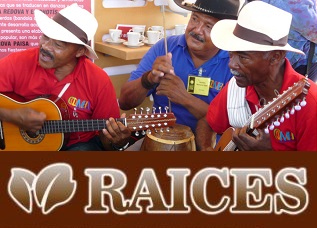Co-authored by Dr. Elena Rios, President & CEO at the National Hispanic Medical Association, and Linda Escalante, California Legislative Director at the Natural Resources Defense Council
Since the recent release of the latest Intergovernmental Panel on Climate Change (IPCC) report warning that we must take significant climate action now, the issue has moved to the forefront of the national conversation. Lacking from our discourse is the undeniable connection between climate change and public health, especially in states suffering from extreme events, like California.
The Natural Resources Defense Council (NRDC) recently published a report titled, “Climate Change and Health in California,” detailing a number of the climate change threats to public health. Based on state evaluations of climate and scientific publications, the report warns that if we don’t take serious climate action, Californians can expect to see more days of extreme heat, more smog that degrades air quality, severe droughts that threaten food and water security, and more heavy rains and floods that can damage homes and infrastructure.
There is a well-documented history of extreme weather and climate events in California that includes forest fires, floods, droughts, and dangerous heat waves. In the past decade, the state has experienced a host of record-breaking events, including the highest number of high tide flood days in 2017 in San Diego, the hottest month on state record in July 2018, and the Camp Fire, the most destructive and deadliest wildfire that devastated parts of Northern California. If carbon emissions continue unabated, threats from a warming climate could become a public health crisis. Although California has environmentally progressive regulations and programs to address the causes and effects of climate change, more needs to be done to respond to our changing climate.
Socioeconomic disparities in California, such as housing without air conditioning and lack of insurance, make some communities more vulnerable to the health threats of climate change. Extreme heat can be deadly. It can lead to more heat strokes, heat-induced heart attacks, and severe dehydration, especially for farm and construction workers, while more smog will lead to higher rates of asthma related illnesses, cardiac arrest, and cognitive decline. Communities of color and low-income families are concentrated in these workplaces and neighborhoods that experience the hottest temperatures, worst air quality, and greatest flood hazards, forcing them to shoulder the public health burden of climate change.
The NRDC report points out that in California, African-American, Native Americans, and Puerto Rican are between 28.6 and 132.5 percent more likely to be diagnosed with asthma than whites, making these populations particularly vulnerable to smog. In addition, the majority-Mexican American farm workerswho contribute to the state’s $50 billion agriculture industryare particularly exposed to climate-related threats, including heat-related illnesses and deaths, water shortages during drought, and a climate-sensitive fungal infection called Valley fever.
While the picture seems dire, there is still hope. California plans to reduceemissions of climate-changing pollutionby 40 percent from 1990 levels by 2030, and achieve carbon neutrality by 2045. Already, the state has reduced its emissions by 10 percent since 2004. We have seen the health benefits from reducing fossil-fuel related air pollution, which has led to a notable drop inbronchitis symptoms from 1993 to 2012in children living in the state. This demonstrates that taking meaningful steps to reduce carbon emissions can significantly benefit the health of our families and communities.
Climate change is already affecting the health of Californians, but if we act now to protect vulnerable populations and curb carbon pollution, we can help mitigate and lessen the impact of future climate and weather events. We need to come together to take swift action to reduce global carbon emissions to protect the health and wellbeing of our communities. It’s time for the United States to take action and serve as global leader in the fight against climate change and for California to continue leading this progress.














